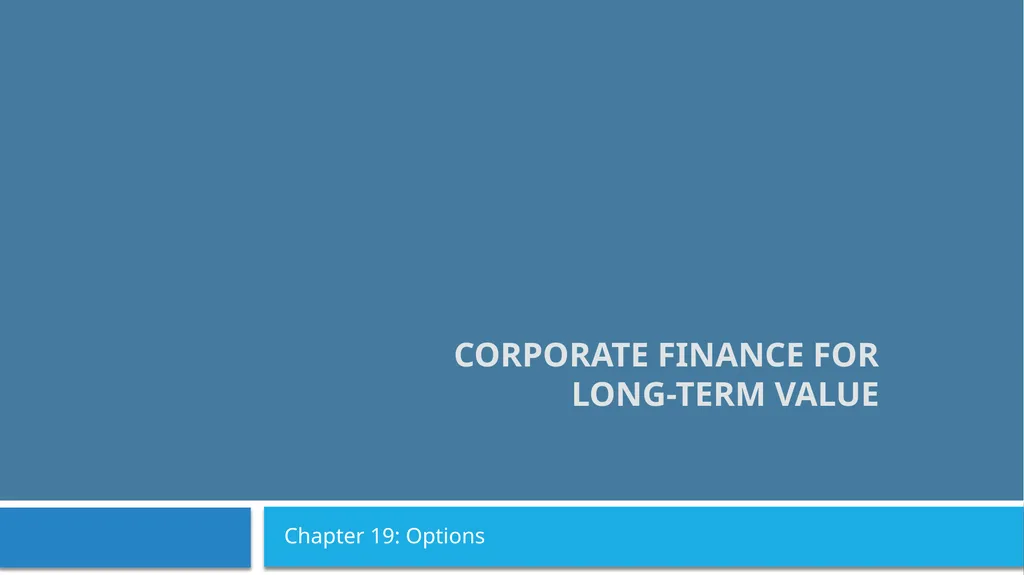Corporate Finance for Long-Term Value Chapter 19:
Author : jane-oiler | Published Date : 2025-06-27
Description: Corporate Finance for LongTerm Value Chapter 19 Options Chapter 19 Options Part 5 Corporate financial policies The BIG Picture 3 Options are contracts that give the owner the right to buy or sell a security at a prespecified price
Presentation Embed Code
Download Presentation
Download
Presentation The PPT/PDF document
"Corporate Finance for Long-Term Value Chapter 19:" is the property of its rightful owner.
Permission is granted to download and print the materials on this website for personal, non-commercial use only,
and to display it on your personal computer provided you do not modify the materials and that you retain all
copyright notices contained in the materials. By downloading content from our website, you accept the terms of
this agreement.
Transcript:Corporate Finance for Long-Term Value Chapter 19::
Corporate Finance for Long-Term Value Chapter 19: Options Chapter 19: Options Part 5: Corporate financial policies The BIG Picture 3 Options are contracts that give the owner the right to buy or sell a security at a pre-specified price Discussion Financial options can be used to deal with uncertainty (e.g. declining price) A real option is the opportunity to make a particular business decision, exemplifying the value of flexibility Real options on F can have E or S drivers: payoff in terms of F, but with E or S as the underlying values Companies have a lot of put options against society, but awareness of them is low: this calls for integrated value expressed in real options Financial options 4 Financial options are option contracts that give their owners the right to sell or buy a security from the writer of the contract at a specified price The two parties to the contract have opposite positions: The buyer (owner) is long the option and has a right (not obligation) to buy or sell The seller (writer) is short the option and has the obligation to fulfil the contract The owner pays a price for the option to the seller, known as the option premium Two types of options: Call options, which gives the owner the right to buy a security Put options, which gives the owner the right to sell a security exercise / strike price Security can be: company stock, exchange rate, interest rate, commodity, etc. Call option – long 5 Payoff at < $10 Payoff at > $10 Call option – long (with premium) 6 The longer the maturity of the call, the higher the probability that the underlying value will at some time exceed the strike price and the higher its value Since it has value, investors will be willing to pay a price for it, called a premium Suppose the premium for a bushel of wheat is $0.40, then the payoff structure becomes Note that premiums are not fixed: they move with the price of the underlying security The buyer pays the premium to the seller at the time both parties enter into the contract, at which time the premium payment is fixed Payoff at < $10 Payoff at > $10 Break-even point: $10.40 Call option – short 7 Payoff at < $10 Payoff at > $10 Including $0.40 premium Put option – long 8














